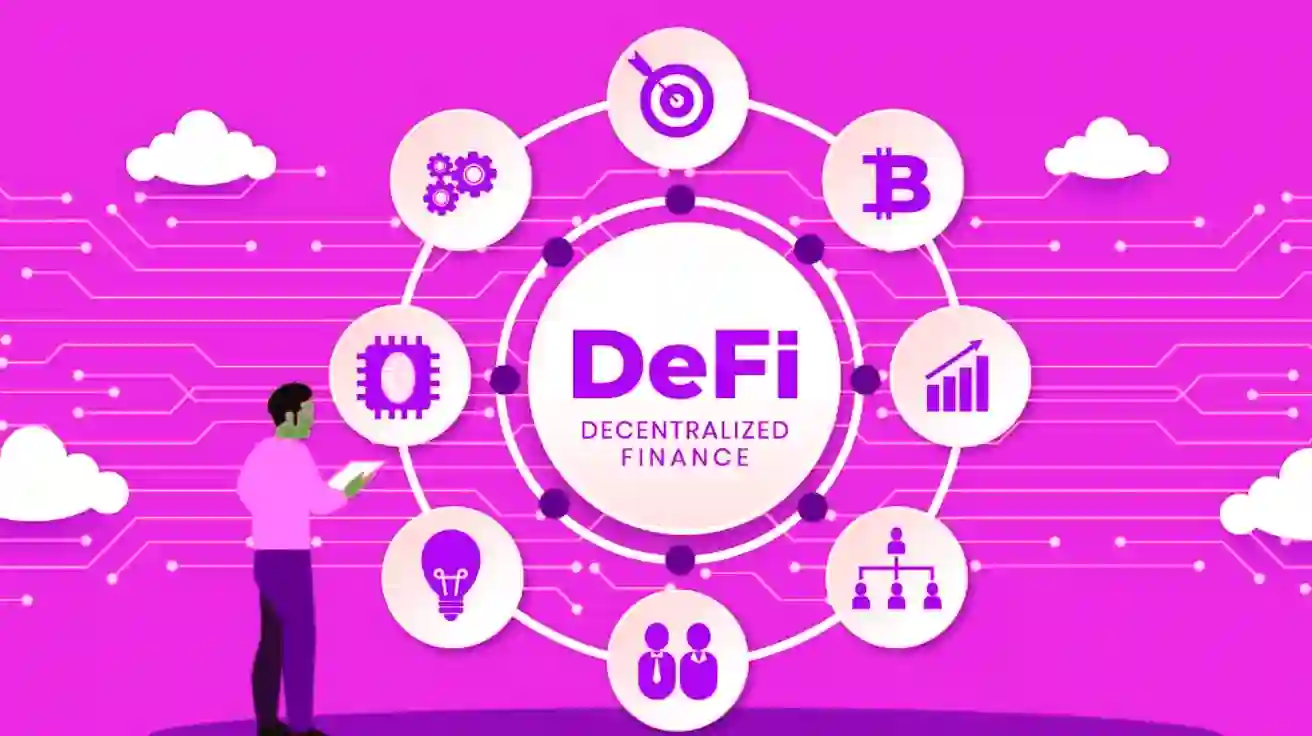Introduction to DeFi
Decentralized Finance, or DeFi, represents a transformative shift in the world of financial services. Unlike traditional banking systems that rely on intermediaries such as banks and financial institutions, DeFi leverages blockchain technology to facilitate financial transactions directly between individuals. This innovative ecosystem aims to make financial services more accessible, efficient, and transparent.
With the emergence of blockchain technology, Bitcoin paved the way for digital transactions without centralized control. However, DeFi takes this concept further, introducing a decentralized financial system where people can lend, borrow, trade, and earn interest without needing a traditional bank account. This accessibility has fueled its rapid growth, making DeFi one of the most dynamic areas in the blockchain industry today.
What Exactly is DeFi?
At its core, DeFi consists of financial applications built on blockchain networks like Ethereum, Solana, Binance Smart Chain, and Avalanche. These applications operate through smart contracts—self-executing programs that automatically enforce agreements without the need for intermediaries.
By removing banks, brokers, and other third parties, DeFi creates an open financial environment where users have full control over their assets. Whether you need a loan, want to trade assets, or seek passive income through yield farming, DeFi offers solutions without the traditional barriers of centralized finance.
The Origins of DeFi
Unlike traditional financial systems that evolved through centralized institutions, DeFi emerged organically within the blockchain space. While there is no single inventor of DeFi, Ethereum played a crucial role in its development. Vitalik Buterin, the creator of Ethereum, introduced the concept of smart contracts, which laid the foundation for DeFi applications. Over time, other blockchain networks such as Solana and Avalanche have adopted similar mechanisms, expanding the DeFi ecosystem.
Key Features of DeFi
DeFi introduces several revolutionary features that set it apart from conventional financial systems:
- Open and Permissionless Access
- Anyone with an internet connection and a crypto wallet can access DeFi applications. Unlike traditional banks that require identity verification, DeFi platforms often function without requiring personal information.
- Instant Transactions
- Traditional financial transactions, such as wire transfers, can take days to process. DeFi transactions, however, settle almost instantly on the blockchain, reducing wait times and increasing efficiency.
- Better Interest Rates and Rewards
- DeFi platforms often offer significantly higher interest rates compared to traditional banks. For instance, lending protocols like Aave and Compound provide competitive yields for users who deposit their assets.
- Composability – The ‘Money Legos’ Concept
- DeFi applications are highly modular, meaning they can be combined and integrated with each other. This interoperability allows users to build customized financial solutions by linking different DeFi services.
What Can You Do with DeFi?
DeFi offers a wide range of financial activities, empowering users with decentralized alternatives to traditional banking services.
1. Lending and Borrowing
DeFi enables users to lend their cryptocurrencies and earn interest, or borrow assets by providing collateral. Platforms like Aave and Compound facilitate this process, allowing individuals to bypass traditional credit systems.
- Lenders earn passive income by supplying liquidity to DeFi protocols.
- Borrowers can access funds without undergoing credit checks, as loans are secured through over-collateralization.
Yield farming is a popular strategy in DeFi where users move assets between different platforms to maximize returns. By strategically supplying liquidity, they can earn rewards in the form of additional tokens.
2. Decentralized Trading
Unlike centralized exchanges (CEXs) like Binance and Coinbase, decentralized exchanges (DEXs) such as Uniswap and PancakeSwap allow users to trade directly with each other. These platforms operate without intermediaries, using automated market makers (AMMs) to facilitate trading.
- Pros: Increased security, user autonomy, and access to new assets before they list on centralized platforms.
- Cons: Higher risk of encountering fraudulent tokens and potential liquidity issues.
3. Derivatives and Synthetic Assets
DeFi platforms like dYdX and Synthetix offer advanced financial products, including leveraged trading and synthetic assets that mimic traditional financial instruments such as stocks and commodities. These derivatives allow users to speculate on price movements without directly owning the underlying assets.
How Are DeFi Applications Created?
Building DeFi applications requires technical expertise in blockchain programming and smart contract development. Developers utilize frameworks such as Truffle and Ganache to test and deploy DeFi protocols. Each blockchain network has its own token standards for interacting with smart contracts:
- Ethereum: ERC-20 tokens
- Solana: SPL tokens
- Binance Smart Chain: BEP-20 tokens
Governance tokens play a crucial role in DeFi projects. For example, Compound’s COMP token allows holders to participate in protocol decisions, ensuring a decentralized governance structure.
Accessing DeFi Applications
Most DeFi applications require a Web3-enabled crypto wallet for interaction. Popular choices include:
- Ethereum-based apps: MetaMask
- Solana-based apps: Phantom
- Binance Smart Chain apps: Trust Wallet
Users must also hold the native cryptocurrency of the blockchain they are interacting with to pay for transaction fees (e.g., ETH for Ethereum, SOL for Solana).
The Future of DeFi
DeFi has experienced exponential growth in recent years. In November 2020, the total value locked (TVL) in DeFi applications was under $20 billion. By 2021, this figure had skyrocketed to over $260 billion, demonstrating the increasing demand for decentralized financial solutions.
While the future of DeFi appears promising, several challenges remain:
Security Risks and Hacks
DeFi protocols have become prime targets for cybercriminals. A report from risk management firm Elliptic revealed that DeFi users lost approximately $10.5 billion to hacks and scams between 2019 and 2021. Smart contract vulnerabilities, phishing attacks, and rug pulls remain significant threats.
Regulatory Challenges
Regulators worldwide are paying close attention to DeFi. In August 2021, U.S. Securities and Exchange Commission (SEC) chairman Gary Gensler called for increased regulation of DeFi, warning that some platforms may violate securities laws. Similarly, Thailand’s Securities and Exchange Commission has suggested that certain DeFi projects may require a license to operate within the country.
Global Financial Stability Concerns
The Bank of International Settlements (BIS) has raised concerns that DeFi’s rapid expansion could pose risks to global financial stability. Given its interconnected nature, a failure in one major DeFi project could trigger cascading effects across the entire ecosystem.
Conclusion
Decentralized Finance is revolutionizing the financial industry by providing open, accessible, and permissionless financial services. With its potential to disrupt traditional banking and introduce a new financial paradigm, DeFi continues to attract attention from investors, developers, and regulators alike.
However, as with any emerging technology, challenges such as security vulnerabilities, regulatory uncertainties, and systemic risks must be addressed. Whether DeFi ultimately reshapes the global financial landscape or remains a niche sector will depend on how it evolves to balance innovation with risk management.
As the DeFi space matures, users and developers must remain informed and cautious. The promise of a decentralized financial future is exciting, but it requires responsible participation and continuous development to ensure a safe and sustainable ecosystem for all.



